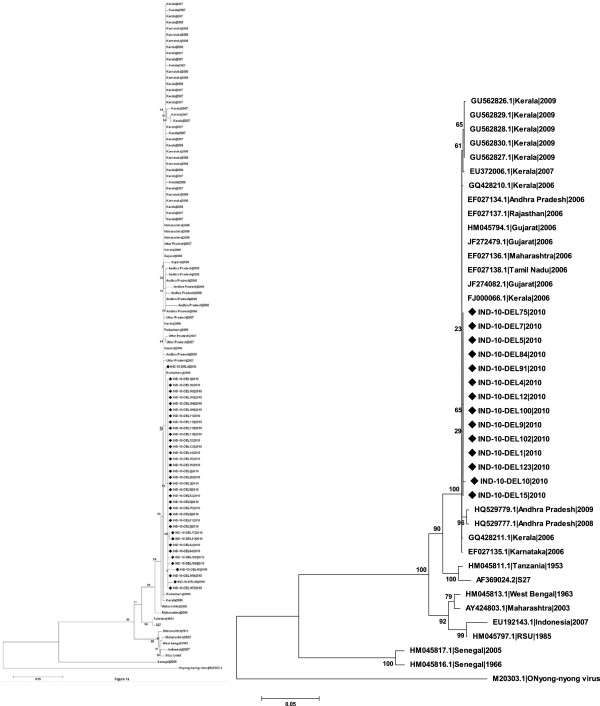Figure 1.
A & B: Phylogenetic relationship among CHIKV isolates from eight states of India. A) based on partial E1 gene sequences (428 nt) performed on 109 nucleotide sequences and B) on partial E2 gene sequences (1002 nt) performed on 42 nucleotide sequences. The tree was constructed using Neighbor-Joining method. The percentage bootstrap support values (1000 replicates) are shown next to the branches. The tree is drawn to scale, with branch lengths in the same units as those of the evolutionary distances used to infer the phylogenetic tree. The evolutionary distances were computed using the Kimura 2-parameter method and are in the units of the number of base substitutions per site. Evolutionary analyses were conducted in MEGA5. All sequences of strains sequenced for this study has been submitted in GenBank; other sequences were retrieved from GenBank. Scale bar indicates number of base substitutions per site. Onyong-nyong virus used as out-group. Isolates sequenced in this study are indicated by ‘♦’.

